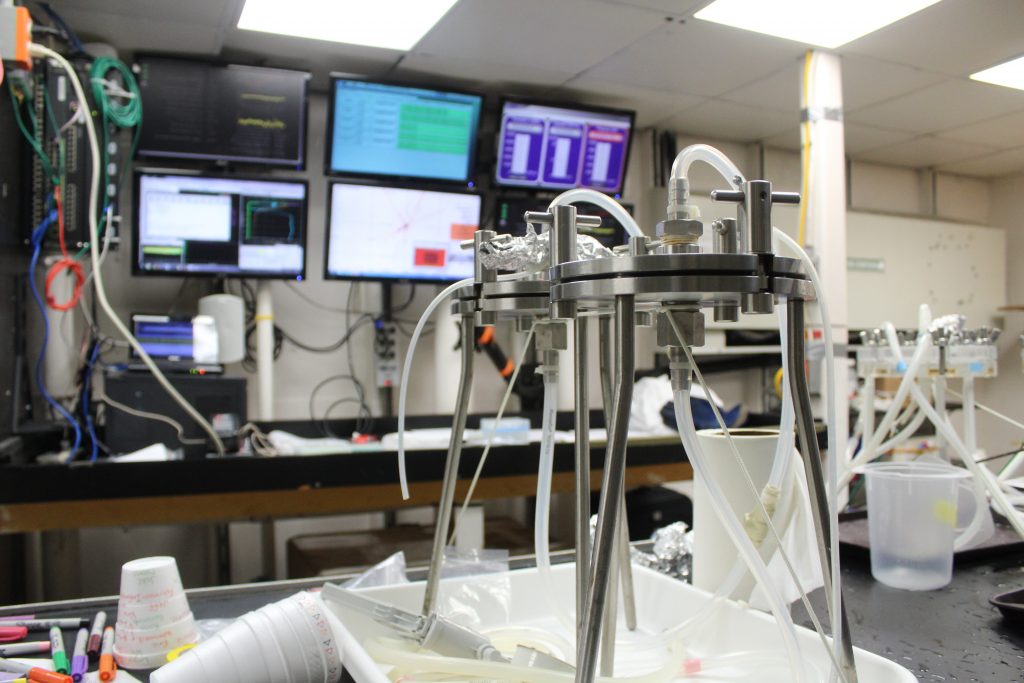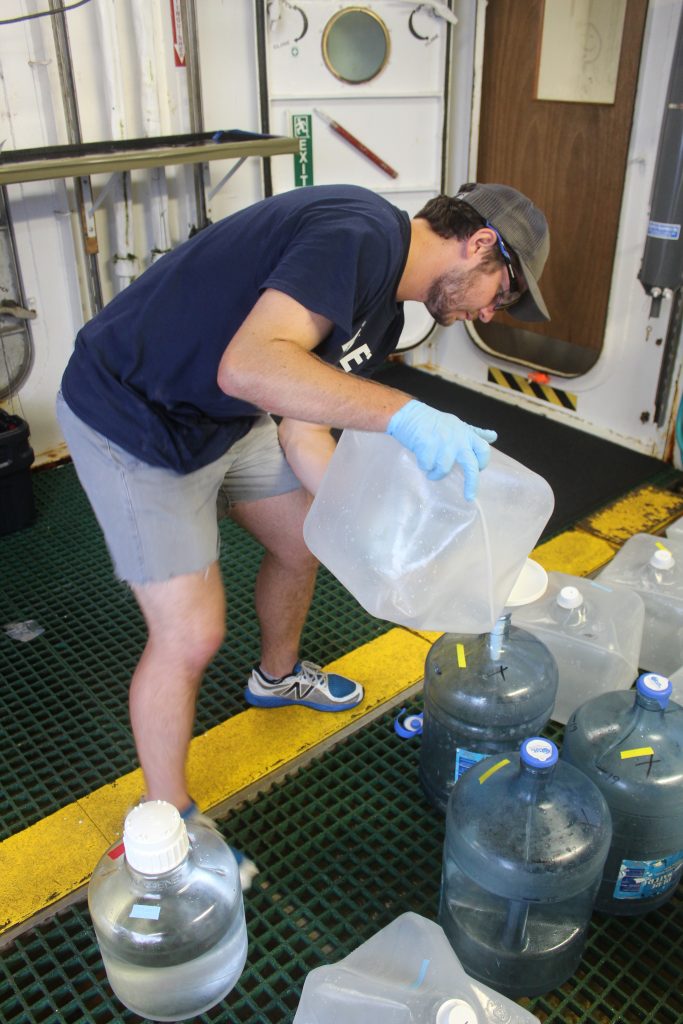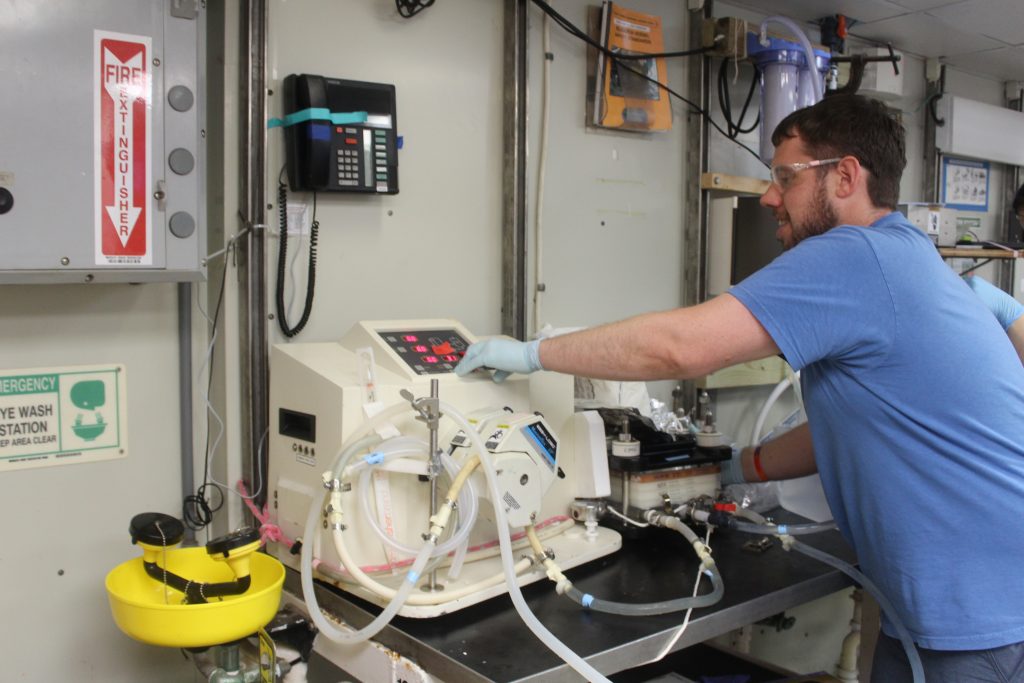Follow along as our scientists conduct research at sea
Bacteria and deep sea viruses, oh my!

The main lab on the ship is home to microbial ecologists from the University of Maryland Center for Environmental Science’s Institute of Marine and Environmental Technology (IMET) and the University of Delaware. The team’s processes rely heavily on each other so they work hand in hand on extracting bacteria and viruses from the deep sea water.
IMET scientists will be looking into what kind of microorganisms are in the deep sea and what they are doing. They will then using molecular tools to identify the diversity and analyze their functions.
By studying the metagenomics (all the DNA they collected at sea) and metatranscriptome (the genes being expressed by organisms at the time they collected them), they can understand how condition such as temperature and depth affect the microbial community and thus how the microbial community affects nutrient cycling in this ecosystem.
While on board, water they collect will be filtered through paper with different pore sizes. As water is pushed through these filters with microscopic holes, bacteria larger than those openings will get caught and collected. An intricate set up of tubing, filter holders and machinery that pushes the water through is set up and secured down to the lab benches with bungee cords.

Once an entire water sample is run through these different levels of filters, filter papers are packaged for analysis back at the lab in Baltimore.
Scientist at IMET are focused on the bacteria in the deep sea, but there are smaller entities that exist in the water. Once most of the bacteria has been captured, this bacteria-free water is passed onto the microbial ecologists at the University of Delaware.
UDel’s researchers use a similar filtration system to extract viruses from the water.
Several water coolers were filled with water sampled from each cast, so the team concentrated the viruses first through filtration and then used tangential flow filtration to further concentrate their samples from 120 liters to about 20 liters. A tangential flow filtration system pushes water through a system that has pores sitting on the surface. As the water flows across the tiny pores, viruses are able to flow out through the pores. The whole process of filtering for viruses is time intensive, with one sample taking almost four hours to complete.

They are not only looking at viruses from different depths, but also investigating portions of the ocean that haven’t been examined as much to see what marine viruses they find. Some of these less studied areas include the oxygen-minimum zone, the point where dissolved oxygen is lowest in the ocean’s gradient, and the deep depths of the ocean.
Another aspect this virology team is investigating is the different types of viruses seen in the water during the day versus at night. Light has a huge influence on the environment, and in the case of viruses, the presence of light can impact what hosts (such as cyanobacteria) are seen in the waters.
Viruses are predicted to be the most numerous being on the Earth, so understanding their impact on the expansive ocean is of upmost importance. Understanding what kind are in the ocean and how they impact their environment could deepen our understanding of a complex system. Viruses in the ocean specifically contribute to nutrient recycling by allowing the release of organic matter by bacteria it affects.
This team of six scientists worked around the clock and did not get much sleep to ensure they could make the most out of this deep-sea excursion.
